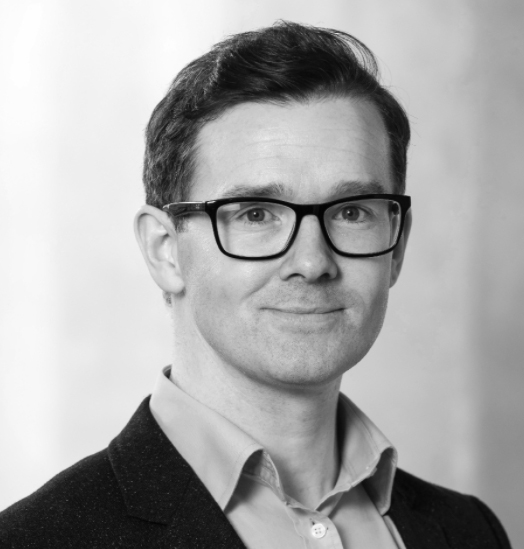
i3PT Certification’s Eoin Leonard and Vicki Reynolds explain to Denise Chevin how compliance lessons from Ireland can help UK construction companies prepare for the Building Safety Bill.
A background in business and extensive experience constructing data centres convinced Eoin Leonard that more rigorous quality control procedures were the only way to deliver all projects. The result was the birth of i3PT Certification.
The Dublin-based company, founded in 2012, offers a quality management software platform coupled with a physical inspection service, and is helping clients and contractors in Ireland meet stringent new laws brought in to improve building safety in 2014.
The experience has lessons for England and Wales as the Building Safety Bill is set to be rolled out with its emphasis on providing greater accountability of clients, contractors and consultants with a golden thread of information.
Here Eoin Leonard, founder and CEO of i3PT, and Vicki Reynolds, its chief technology officer, talk more about what they have been doing in Ireland and how it can help raise safety in England.
Talk us through how you founded i3PT
Eoin Leonard: Construction is in the family: my dad was a builder in Ireland. We all worked on building sites with him from an early age. When I went to college, I studied business, but then when I went back into construction, I moved more into data centre design, focusing on the services side of things.
What was interesting about that was that everything was very clear: data centres select bidders on the basis of quality and performance, and less on the lowest price. It’s kind of like dogs looking like their owners – a lot of construction sectors take on the traits of the activity that they’re supporting, so pharmaceuticals and data centres are really well defined, clear with design and structure; and residential can be a bit more haphazard, which is beginning to change.
I worked on a few commercial and residential projects, and I was so shocked with what I was seeing – it was 2008/9, just before the big financial crash where we started to see a huge number of corners being cut.
It was around 2010 that I decided to explore the idea of a company that would sit client side and focus only on quality and safety.
The idea was that somebody should be sitting on the client side of the table, exclusively focusing on making sure they got what they paid for and got a compliant, high-performing asset at the other side. And there wasn’t, in my view, somebody who was just doing that: it was theoretically part of the design team and contractor’s roles, but they all have other competing, conflicting commitments.
We incorporated the business in 2012 and I brought in Frank Judge as chief compliance officer to help me put the same types of structures that were in place for the food industry, in place for the construction industry and build a process and a system that could do similar things.
What were the other factors in driving the business?
There was a big shift in Ireland as well in 2014, when the regulations changed dramatically. We had our own version of Grenfell, a regulatory failure – luckily no one was harmed and there wasn’t an actual fire, but the building was condemned, and people had to move out.

“The reality is that when you put so much emphasis on paper, even if it’s digital, the absence of actually going out and looking, photographing and thinking, can be detrimental.”
It was nothing on the scale of Grenfell, but it was enough for the Irish government to react and put in place a whole new system of certification that required detailed inspection and test plans and required new duty holder roles to be identified and new accountabilities to be defined.
So, we benefitted pretty quickly from that shift in legislation, and we worked with some of the biggest companies in the world.
Can you tell us more about the service i3PT offers?
EL: There are two core elements to it. The first stage that we do with most clients is to build the strategy and frameworks that they need at a company level, because when you try to tackle something like quality or sustainability, it’s a mistake to look at them as operational or technical challenges.
This has become particularly acute with the new environmental, social and corporate governance and sustainability requirements that are coming in for the construction industry – the UK just announced its taxonomy that is going to define sustainable assets and whether a building is green or not in the future.
Add to that the Building Safety Bill and we’re talking about a situation where the legislative landscape is shifting dramatically. All of these declarations that people are making now about being greener or safer, in the next few years they will be subject to audit and will required to be evidenced.
So, the service you offer – it’s a quality management system, but does it include any physical checks as well?
EL: It’s both. More often than not, it’s using our own platform in conjunction with other things; when we look at an organisation, we go through that strategy piece initially, we identify what the gap is between what they’re currently doing and what they need to do. And then we identify where they need to plug those gaps and then it’s about digitalising that process.
We don’t encourage people to throw the baby out with the bath water – if you’ve got something that works, use it and we work around it.
It’s putting the plans in place so that the contractors, designers and everyone are working to a quality plan that can be demonstrated, and to a sustainability plan that can be evidenced. And we put those plans in place for every project and track them right the way through, and then we inspect on site as well and make sure things are happening the way they should be happening. We work for clients and contractors.
Can you say more about your software?
CertCentral is the name of our platform/software. It’s central to how we work and allows us to be more diligent. We developed it because there was nothing off the shelf that was suitable.
When we’re working with CertCentral on a project, we often find that we have to interface with third party tools or a variety of other things. We’re trying our best to provide interfaces and improvements in the process as we go.
Vicki Reynolds: We have features that facilitate quality management, project management, document management and more throughout the complete lifecycle of an asset, but we’re aware that some organisations have certain tools that they’re already committed to and are embedded within their organisation’s processes. They want CertCentral to integrate with these other systems so that data can be shared safely between them.
For that reason, it’s in our best interest to create integrations and APIs. These are types of software interface, offering a service to other pieces of software and we’re seeing a demand for these connections directly from clients.
EL: Any kind of change orders on a project would all be recorded and tracked. And if something were to be rejected, that would equally trigger a task. One of our clients recently called it a Fitbit for the building – you have this nagging technology that reminds you to do something. You can do it at a project level, or you can do it at a portfolio level.
Some of our really big clients are looking at all of their projects on one great big dashboard, and they’re trying to see where the problems might be coming from: whether it’s in the supply chain, or specific systems, or products or whatever.
How does it interface with BIM?

“There’s a real concern in the UK that this is going to be uncomfortable. But it has to be uncomfortable, because if you’re comfortable, then you’re complacent and that was the checklist mentality.”
EL: We don’t get into the production of information – the designers will still produce their information in their own environment. But when they want to share that information with the client or contractors, it will happen in the sharing part of our system. Any files being shared will typically happen through CertCentral. Also, the review of that information happens in CertCentral.
VR: We have a Forge viewer built within the system that then can be used for things like mark-ups, which can then be pushed into the same kind of workflows as your raised issues and RFIs. So, you can raise a query in the model and send that back to the author and start a workflow there to get that resolved and signed off, in the same way that we would do with an issue on site or a design issue in a 2D pdf.
It also integrates seamlessly with [Autodesk’s] BIM 360, so for instance, our team can raise an issue using CertCentral, which can then be pushed into BIM 360 for our contractor to then respond to, which is then pushed back into CertCentral.
What would you say are the lessons from Ireland that can help conform with new legislation in the UK?
EL: When the regulations first kicked in here in Ireland, there was a real panic to rush towards templates. And we felt it became almost like a checklist and not in a positive sense. It became a situation where we found certain practices and certain contractors were almost feeding their professional judgement to a document.
There was a massive amount of paperwork but not a huge amount of process behind it. The reality is that when you put so much emphasis on paper, even if it’s digital, the absence of actually going out and looking, photographing and thinking, can be detrimental.
A lot of the processes that are coming in as part of the Building Safety Bill are already here in Ireland. The gateways in the Bill are almost identical to the gateways in Ireland. Passing through gateways can present major commercial challenges on projects, where a certificate could hold up the handover of the building and trigger major financial and reputational damages.
So there will be unintended consequences to come out of this as well, there will be standard deliverables in contracts that will no longer be achievable – things like practical completion, if it gets linked to validation of the building safety regulator. The key is just to have all of these things in your plan, have them built out and have them trackable and flexible so that you know where the issues are going to arise.
VR: There’s a real concern in the UK that this is going to be uncomfortable. But it has to be uncomfortable, because if you’re comfortable, then you’re complacent and that was the checklist mentality, that was what that paper process was doing originally in Ireland and is often the case in the UK at the moment. You forget to use common sense because you don’t feel personally accountable anymore – you have to have that fear to enable the situation to improve.














